Themes
Looking for inspiration, design tricks, how to make a great cover, promoting your yearbook and engaging your community?
Most recent

Yearbook hero Jazmine Richey and her editor share their vision
Treering Yearbook Heroes is a monthly feature focusing on yearbook tips and tricks.
In March, Treering Yearbooks announced its 2022 #TreeringMemoriesMatter Design Contest for yearbook advisers, coordinators, and editors to share their unique perspectives from their campus community. It’s time to meet the winners and glean their best practices for yearbook spread design.
Jazmine Richey is a student editor from Grandview High School in Grandview, WA who was nominated by her editor-in-chief Lilly Kassinger for her basketball spread. This spread caught our eye and became the one to beat for several reasons: it shows basketball season from the fans and team’s POV, it’s modular, and there’s a highlight reel produced by Jazmine linked to the QR code.
Jazmine, what all went into creating this spread?
I wanted to create a spread with not only the sports players included but the huge student section our school held. I created a highlight video for our boys' basketball team and wanted it to be included on my spread to show parents, students, or anyone who buys a yearbook. I took a picture of our own basketball hoop and wanted to incorporate each of our boys by giving them their own basketball.
It was an exciting year for you: national recognition for your yearbook staff, basketball state tournament playoffs, a crowd in the stands, and a new campus building!
They're pretty excited, especially because it's everyone's first year in the yearbook class. We're all really glad our hard work has paid off like this. More than anything, this yearbook spread represents both the creativity of our yearbook team and the passion our school showed during the winter sports season.
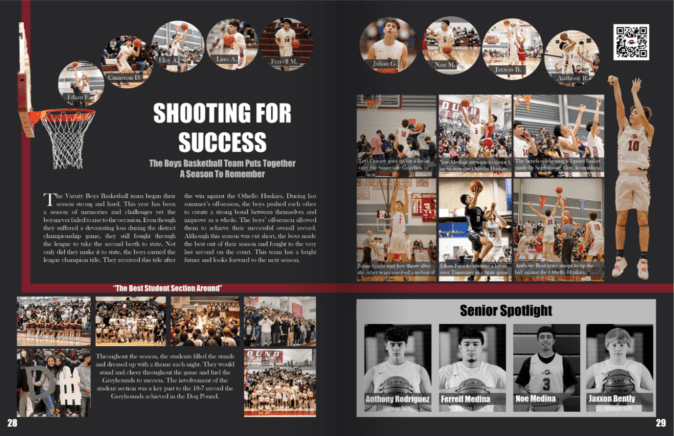
Lilly, please describe your relationship with Jazmine and why you nominated her.
Jazmine is one of our spread developers. In addition to creating her spreads, she does photography and edits videos to create content for our school. My role as editor-in-chief is to edit the spreads made by our team to make them fit together and take care of the rest of the book's loose ends.
How does your team design the book?
Our team makes all our spreads in Adobe InDesign and everyone creates their own layouts. As the editor, it's always nice to see the way each person on the team likes to design their spread, because once they make a couple you can see what their style is. Then I get to make the little tweaks to tie them all together for our book
Explain the big tie-in: the red line.
The spread is built around what we call the Red Line of Equity, which is a red line that is on our hallway tiles in real life. As this is our first year in our new building, we decided to incorporate it into our yearbook as a design element featured on every page, tying back into our theme of "Paving The Way" as we take the new parts of the school and turn them into traditions. The line represents not only the presence of the Red Line of Equity in our everyday lives but the beginning of the creation of traditions here at GHS.
Our school's yearbook's main strength is our theme and the way it is present in all aspects of our design. Our Red Line doesn't run through every page just because. We gave it a meaning. Just think about what story are you trying to tell about your school and dive right into making it into a reality.
What advice would you give to another student who is just getting started?
The most important thing is to have a vision.
QR Code is a registered trademark of DENSO WAVE INCORPORATED.
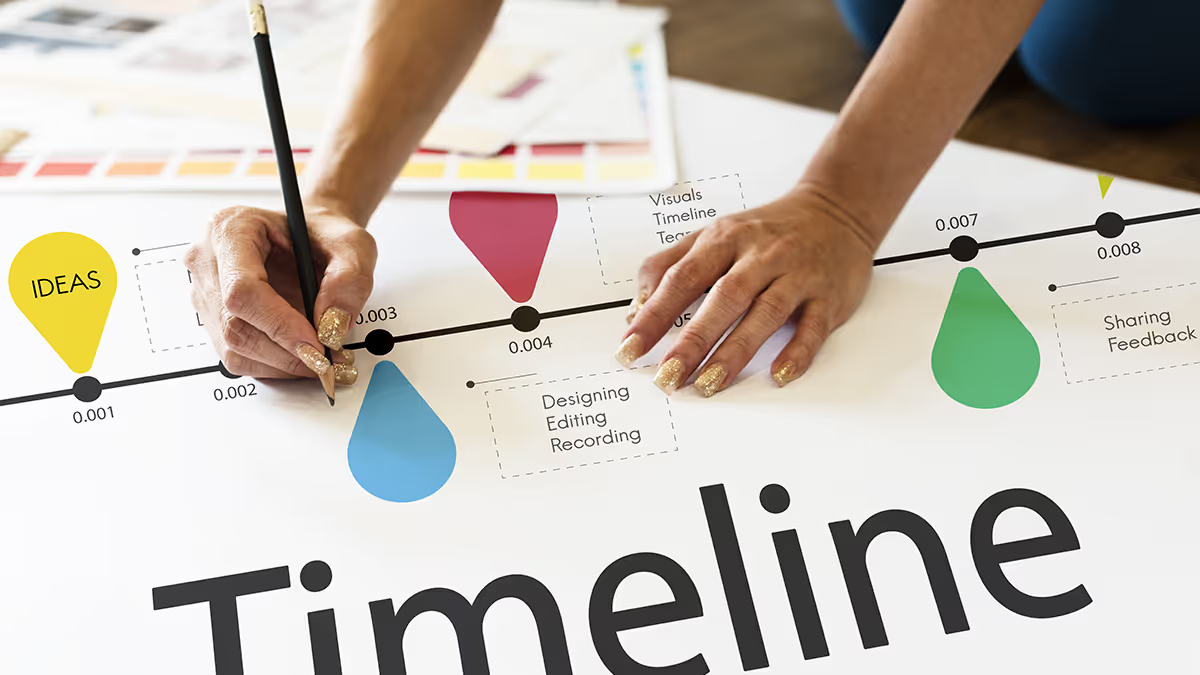
The only yearbook timeline you'll need
Project manager. Social media marketer. Volunteer luncheon coordinator. Teacher liaison. Journalist. School historian. Memory maker. Yearbook coordinators wear all these hats and more! Below, we’ve taken one thing off your to-do list and compiled all the things on the definitive yearbook timeline so your planning and production resources are in one place.
When Last Year's Book is Complete...
Don't freak out. Keep scrolling if you were just handed the reins to the yearbook.
Fall
If there's one thing we hear from advisers around the globe, it's that they wish they started earlier! And while we can’t give you the gift of time, we can hook you up with some ideas to save you some.
Create a Plan
(Note to self: planning and controlling are two different things.)
It's impossible to think about yearbooks without considering yearbook themes. Whether you use a pre-designed one or create your own using Treering's design application, make sure it tells the story of your school this year.

Gather the school calendar, and PTA-sponsored events, previous yearbooks, and, with your team, start your ladder. This will be the overarching plan for the year(book). Your yearbook details should align with your ladder.
From there, add your team, create shared folders, and decide how to assign spreads. You’ll want to schedule follow-up meetings and track progress on this timeline.
Pre- and post-event check-ins ensure expectations are set and met.
Tweet
Start Marketing
When we think of marketing, we think of yearbook sales. It’s so much more. Your marketing plan should include
- Crowdsourcing efforts
- Yearbook staff recruitment
- Yearbook sales
No one will know what you do (create the most epic yearbook ever), what you need (photos, photos, and more photos), and how they can be a part of it (upload photos, join the team, host a party) if you don’t tell them.
Back to school is the ideal season to begin selling your yearbooks for two reasons: early discounts and the opportunity to earn free yearbooks. We’ve created a marketing plan template so you can stay organized.
If you are using your yearbook as a fundraiser, once again, work backward from your goal. For instance, is the PTG trying to earn money for more books in the library or playground equipment? Is your yearbook team trying to invest in new equipment? How much per book is needed to earn that amount of money?
Gather Content
August through November offer myriad opportunities to capture content and begin building your book:
- Student orientation
- First day
- Halloween
- Yerdsgiving
- Classroom shots
- Homecoming
- Spirit week
- Fall sports

Seize the [Picture] Day
Portraits comprise 40-60% of the average yearbook. If you aren’t on a first-name basis with your school photographer, it’s time to change that.
Touch base with your photographer and double-check they will export the photos in PSPA format (this is industry standard, but not everyone uses it) and confirm how they will deliver them to you. Copy your picture day coordinator on all correspondence (and offer up this professional school photographer's advice).

Winter
When you hit winter on the timeline, there is a shift at school: everyone becomes vacation-focused, and the list of things to do multiplies. (Late to the party? We have you covered with our yearbook quick start guide.)
Stay the Course
By now you have a rhythm: Your team has their assignments and together you’re tracking progress. Fall event pages are drafted and in the yearbook. Portraits should arrive momentarily. You follow up every event with an ask for additional POVs.
Begin Proofreading
Treering Yearbooks allows you to download a PDF proof of your book throughout the design process. Here’s how we use them:
- Hand our portrait pages to teachers to help verify names and classroom placement
- Project pages and evaluate them as a team
- Track coverage
- Post sneak peeks on campus
We have a whole module in our free yearbook curriculum on editing.

Cover Year-End Festivities
Fall and winter are the seasons for Bodhi Day, Christmas, Diwali, Kwanzaa, Hanukkah, and Thanksgiving. Consider adding family celebrations to your coverage timeline as well as class parties.
Inspire Generosity
‘Tis the season to be selfless! Treering’s donation option makes it easy for families to gift yearbooks to the school. Advisers and coordinators then share the love by distributing yearbooks to those in need or gifting them to staff members.
Spring
It’s time to spring into action and finish the book! (Heads up: it’s also time to get those yearbook spreads and personalized pages ready for Treering Yearbooks’ spring contests.)

Finish Strong
If winter was the season everyone is ignoring you, in spring, everyone has questions. Can I have more time? How do I get my photos in? How do I buy a yearbook?
Some easy ways to help save your sanity are:
- Be proactive and share the personalized pages tutorial online (seasoned advisers hold their own training session).
- Use templates or the auto page builder to start your layouts. You can always modify them.
- Make sure all teachers and the front office staff have the ordering info. You may even want to share a QR code for them to place in newsletters.
- Add Year in Review and Trend pages
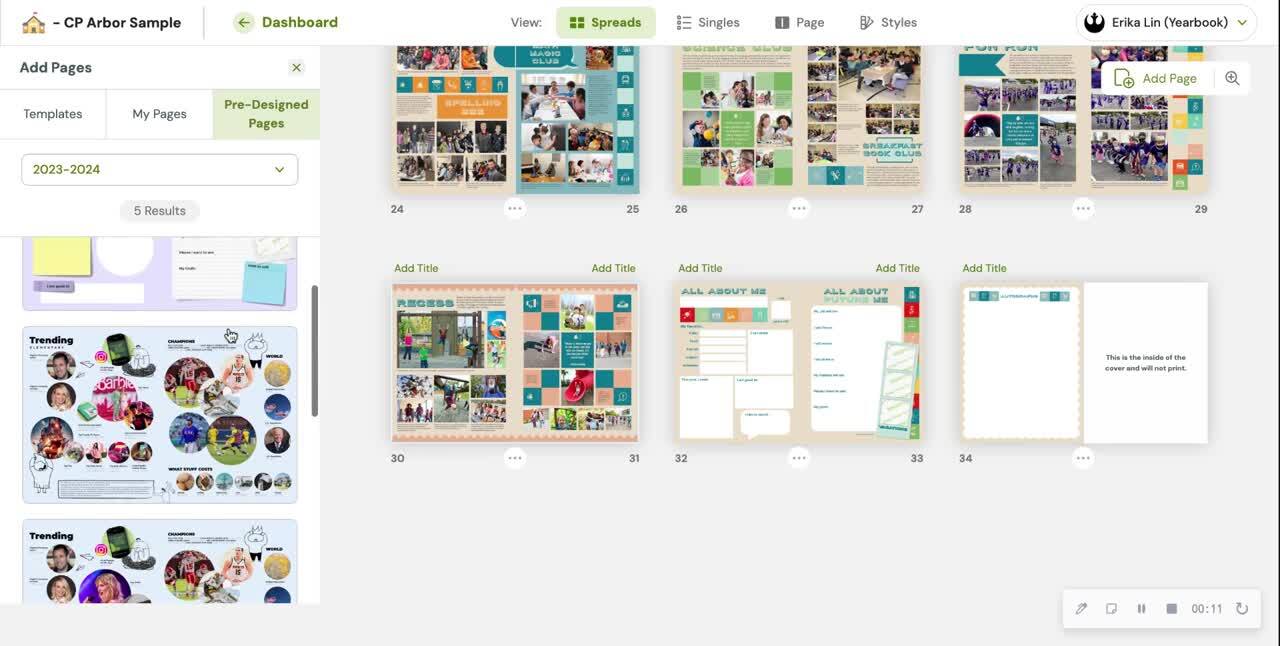
Let It Go... and Celebrate!
Before you hit print ready, ask yourself:
- Do we need to order extra books? (Some schools like to keep a copy in the library.)
- How do we want our books sorted?
- Where should our books be sent?
- When will they arrive and do we need expedited shipping?
Summer
High five! You did it!
QR Code is a registered trademark of DENSO WAVE INCORPORATED.

Summer yearbooking: how to prep
There are two schools of yearbook coordinators: the first, would never click on this blog, and the second, is ready to prep for the following school year. We’re glad you’re ready to lay the foundation for your yearbook over the summer and hope these three steps relieve stress because you’ll enter the school year more prepared than ever, and help you tick off some boxes so you can fully enjoy your summer vacation.
Step 1: Build your Team
Yearbook finished, check! Distribution party a success, check! Use this momentum to recruit a new team. Before you hand out your yearbook staff application, debrief with your current team and state your goals for the upcoming year.
Are you creating a memory book? Be sure to build a team of photographers to capture the emotion behind the events as well as some marketing mavens who will pump up crowdsourcing efforts.
Are you looking to go more journalistic and create a history book? You’ll need writers/reporters in addition to your layout designers and photographers.
Are you creating a spirit book? You’ll want people who are passionate about your school community.
If you lead a student class or club:
- Make sure your recruiting message aligns with your goals
- Highlight the transferable skills
- Solicit recommendations from the faculty as well as your current team
- Build your syllabus and bookmark these rubrics from our free yearbook curriculum
Summer is a great time to do some introductory training with your team. Some advisers do a two- or three-day minicamp and select the theme, colors, and fonts for the year. Others host team-building events to build trust before jumping into design.
If your team is comprised of adults:
- Make sure your recruiting message aligns with your goals
- Set specific expectations for involvement
- Follow up, follow up, follow up
- Offer opportunities for all parents and teachers to contribute

Step 2: Start a Ladder
A ladder is the lifeblood of yearbook organization because it serves two functions:
- It helps you create a schedule
- It helps you determine your page count
From your ladder, you can reverse engineer your yearbook from the final deadline to all the photoshoots that need to be scheduled in between. Since this doc is an overview of the entire book, some yearbook staffs like to post it and use it to check off spreads when they are finished.
Using this yearbook organization module will help you with all the back-end administrivia.
Step 3: Relax and Wait for School to Start
We’re working parents, so we get it: it’s easier said than done. Yes, you’re going to want to solicit summer vacay photos for the yearbook, so grab you-time when you can. From an extra five minutes of privacy in the bathroom to hours with a great book, we wish you well.
To echo the signatures in our yearbooks, have a great summer!

7 things to do when the yearbook is done
Congratulations! The yearbook is done… Now what? I remember the years before I found Treering Yearbooks, when my publisher called in the pages at the end of February. A whole quarter of yearbook students with “nothing” to do was a pedagogical nightmare. Even with a three-week turnaround, Treering advisers everywhere need inspiration, motivation, and a few learning outcomes to finish the year. After talking with several advisers, we compiled this list of things to do to make the end of the year even more meaningful.
1. Keep, Change, Stop
This is a conversation to have with your printed proof in hand. Thumb through as a team, project some spreads on the wall and complete a matrix. What aspects of your program are proverbial home runs and should be keepers? What needs to be changed? (Use this time to brainstorm solutions.) What needs to be stopped?

How it worked in San Diego, CA
After ten years at a K-12 private school, the yearbook staff said they wanted to stop having a purple yearbook. It was a sacred cow we were ready to take off the altar. We color-coded the book in warm reds for the upper school and cool blues for the lower school. When we did the reveal, some of the lifers were enraged until the editor explained, “Blue plus red equals purple.” Cue tears.
It was another five years before we did a purple book again. Had we not had the Keep-Change-Stop conversation, the journalism program would continue to limit its creativity and every book would essentially be a spirit book.
2. Honor the Yearbook Heroes
Grab a stack of thank you cards from the dollar store and take time to recognize the people who helped you create the book, from the office team who gives you the roster at the start of the year to the mom who tirelessly uploads photos from the pick up line. If you are not acknowledging the yearbook heroes on your campus in your colophon, think of a public way to do so:
- School marquee
- Social media post
- Special luncheon
- Send a THNKS a latte
How it worked in Olathe, KS
Being unable to set foot on campus last year was certainly an obstacle, but with the help of our amazing PTO members, school staff, yearbook committee, and community of parents, we were able to still capture the year in a holistic way. We worked with parents to showcase our year in and outside of school.
Because it was a collaborative effort, and we really do have such an awesome community of parents who make this all possible, it was easy to make a video and celebrate our yearbook coordinator through Treering’s #YearbookHero Contest.
3. Make Time for Fun
How many of us Type-A advisers focus on business and forget to play? When the yearbook is finished, it’s the best time to celebrate. Some ideas for stress-releasing fun include:
- Craft time
- Digital escape rooms
- Potlucks
- Game nights
- Sundae bars
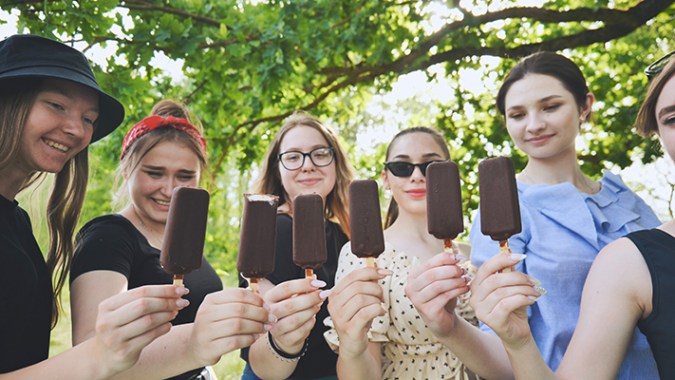
How it worked in Clarksville, TN
All of us brought in a board game to play. Our adviser made us rotate for a week and try one another’s. I learned Exploding Kittens, Sequence, and Mancala. It helped us break down the stress of finishing the book and focus on celebrating as a team. After the week, we went back to business and got ready for our signing party.
4. Hold a Social Media Bootcamp
The period between going print-ready and distributing your yearbook is the ideal time to teach new skills, such as social media marketing. If your school has a social presence, adding yearbook-related content is one idea to keep what you and your committee are doing top of mind.
Tweet
Before you bring in a marketing professional or check out a professional course, set the goals and expectations with your team. Do you want to
- Recruit volunteers?
- Sell more yearbooks?
- Crowdsource content?

How it worked in Arlington Heights, IL
Going social was the best thing we did for our yearbook. When I saw the social media calendar, we adopted it, and it increased our followers, which increased our yearbook sales and crowdsourcing efforts.
We also created a hashtag for our yearbook, so if any parents posted a photo—if they used the hashtag—we would consider it for publication. This helped us get a bunch of photos we wouldn’t normally have: boarding the bus, friend groups at events, and cultural events.
5. Brainstorm Evergreen Ideas
Evergreen content for yearbooks is a collection of interview questions, infographic topics, and story ideas that can be used throughout the year. (Here are 40+ to get you started. You’re welcome.)While we want to have a yearbook that reflects the current year and trends, having a timeless collection for reporters and designers serves two purposes:
- Something to do: in that first-of-the-year lull, students can build out evergreen modules and work hard to incorporate less involved students.
- Fill coverage holes: sometimes an event doesn’t happen (hello 2020). Sometimes a student doesn’t cover an event. Sometimes you just have holes. By having a collection from which to draw, you will always have usable content.
How it worked in Williamstown, KY
I remember the first time a student missed an assignment. As a second-year teacher and rookie adviser, I felt like a failure because I didn’t have a contingency plan. My editor actually came up with the idea to have a question of the day. She would text the question in the morning and everyone would ask three students. They would then input the responses into a Google Form.
We kept all the questions related to our theme, Give + Take. They were simple like “Give us your top three songs” or “If you could take a class on anything, what would it be?” Since they were thematic, it was a perfect complement to our book. If we needed a student for coverage or had a blank spot on the spread, we had the material for an instant quote bar. Using Google Forms also allowed us to track and sort the answers by the respondent.
6. I Do, You Do, We Do
I Do, You Do, We Do is a teambuilding idea as well as a way to add in professional growth. It works like this:
- I pick a skill to teach the class and demonstrate it
- You learn and apply the skill
- We do it together

How it worked in Miami, FL
We decided we wanted to use Doodle as our theme for next year and wanted to create coloring book-style pages in the book for dividers and such. None of us are Photoshop pros, so our adviser suggested we learn. Each of us on the editorial team for next year picked a video on YouTube to watch. Then we taught our classmates how to do it. Teaching my friends to do something I just learned made me proud and they listened well.
7. Practice Interviewing
It’s easy to fire off a text that says, “Give me a quote for yearbook,” but yearbook staffs don’t do easy journalism. Spend some time refining your reporting using the yearbook storytelling module of Treering’s free curriculum.
How it worked in Lakeside, CA
Our district hired a branding company to re-do the website, marketing materials, and our social presence. They brought in a photographer to capture student life and take professional headshots of the staff. When the final products came out, they were incomplete. No one knows the Warriors like the Warriors, so I seized an opportunity: hire out my yearbook students.
We wanted to improve our writing, so we created a list of questions to ask teachers and re-wrote all the staff bios for the website.
Your Turn
With these seven actionable ideas, you can find a place of rest going into summer. If you want to get a head start on planning for the fall semester, check out six weeks of yearbook lessons, including rubrics and a yearbook class syllabus.

Three yearbook colophon ideas
What is a colophon anyway? Publishers include this vital piece to record production notes and sometimes acknowledgments. Since your yearbook is a historical document, including a colophon adds professionalism to your publication. But it doesn’t have to be boring! Below are three examples of yearbook colophons that include theme details, shout-outs, and yearbook staffing information.
Essential Components for Your Yearbook Colophon
- Title of yearbook and theme information: include any behind the design information
- Book details: the number of pages, cover type, and paper weight
- Design specs: font names sizes and use cases
- Photography credits: Identify your portrait photographer, staff photographers, and any volunteer super parents who contributed
- Software tools: list which applications you used to build your book
- Publisher information: name of the publisher and the names of the publishing staff who helped
Thematic Colophons
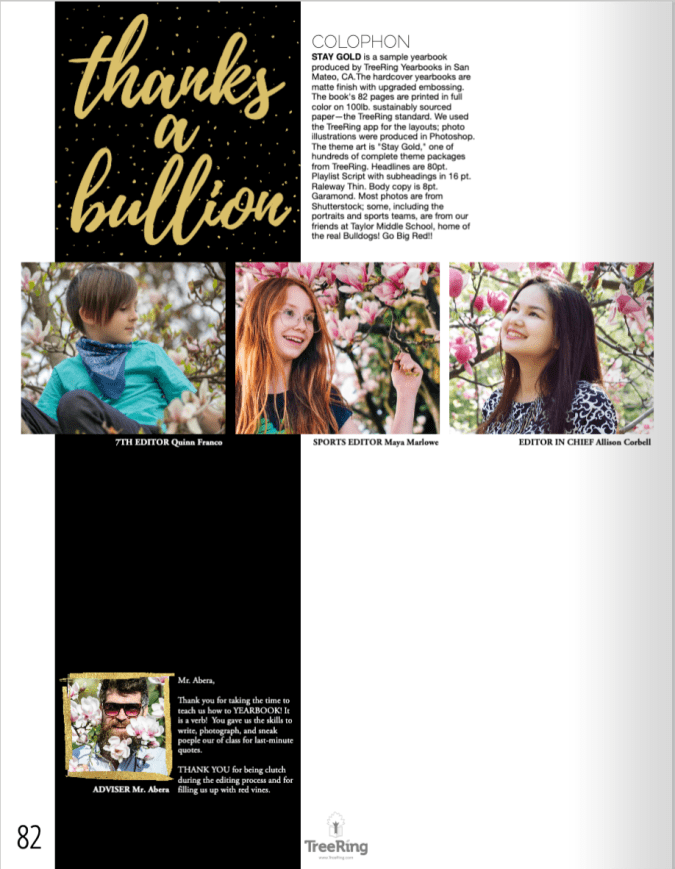
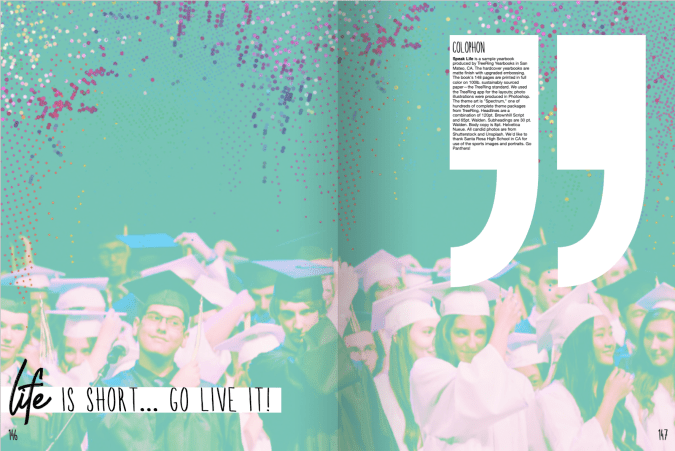
Both of these colophons leverage their themes (Stay Gold and Speak Life, respectively) with the headlines as well as the graphics. (The actual copy of their colophons is below for you to use.)
A Bold Colophon
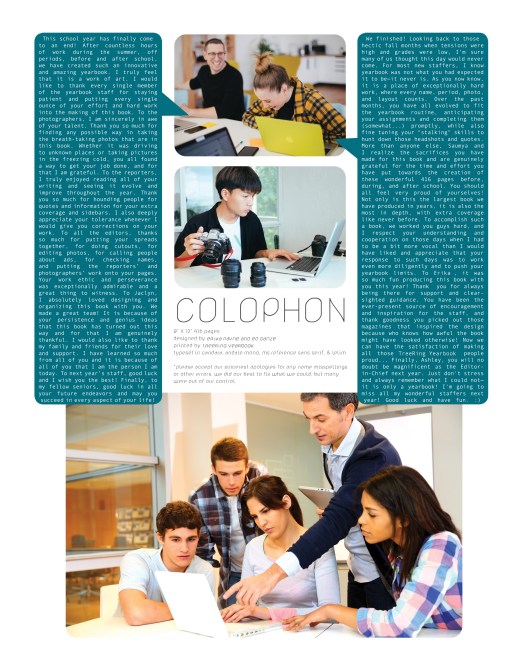
We love this one because it features the yearbook team, gives the book details in an easy-to-read format, and both editors have space to say thank you.
Yearbook Colophon Template
To create a quick colophon, copy and paste the following in your yearbook. Make it your own by giving behind-the-design details.
[Yearbook name] is produced by [School Name] in [City, State] and published by Treering Yearbooks in San Mateo, CA. The [hard- and/or softcover] yearbooks are [matte or glossy] finish [with upgraded embossing or foil]. The book's [number] pages are printed in full color on 100lb. sustainably sourced paper—the Treering standard. We used the Treering app for the layouts; [if applicable, list software used to make photo illustrations]. The theme art is [theme name from Treering] and [name] designed the cover. Headlines are [font and size] with subheadings in [font and size]. Body copy is [font and size]. [Photographer] took the school portraits and [parents, coaches, non-yearbook students] contributed [team, event, and/or candid] photos.

3 (but really 7) design elements to up your yearbook's visual appeal
Personal anecdote: In 1996, I joined my first yearbook staff. Shout out to Mr. Wayne Weightman who took a chance on a loud introvert and turned her into a creator. Fast forward a quarter-century (sheesh) and his yearbook design lessons are still impacting students—some of whom are now educators—and scores of creators.
The Easiest Element: Spacing
One pica was the standard back in the day when orange wax pencils and cropping squares were the norms. Each spread was designed on grid paper measured in picas. Below is an example of one pica standard yearbook spacing. It's clean. It's traditional. It's fine.
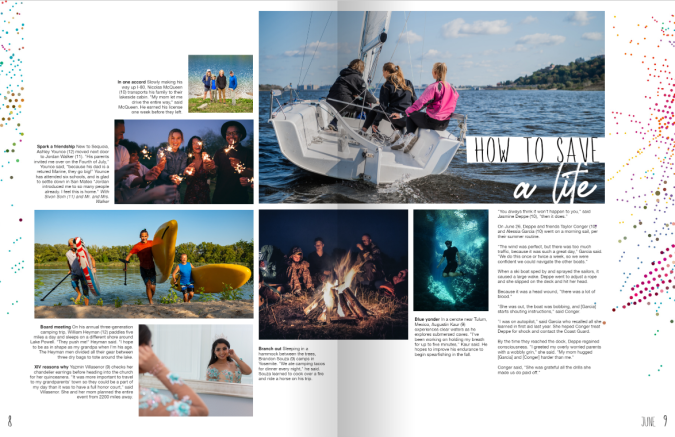
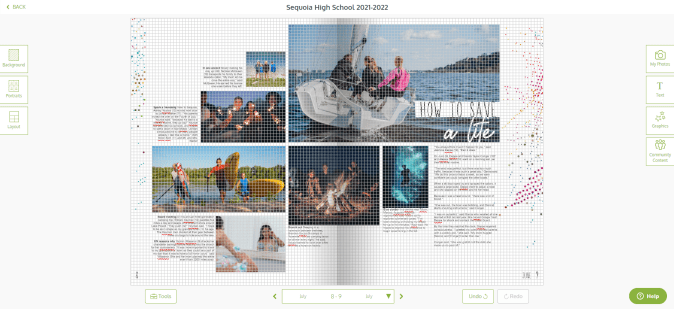
Contrast that with tight spacing. This is one-half pica (the design equivalent of red stilettos). Your spread just had a glow up.
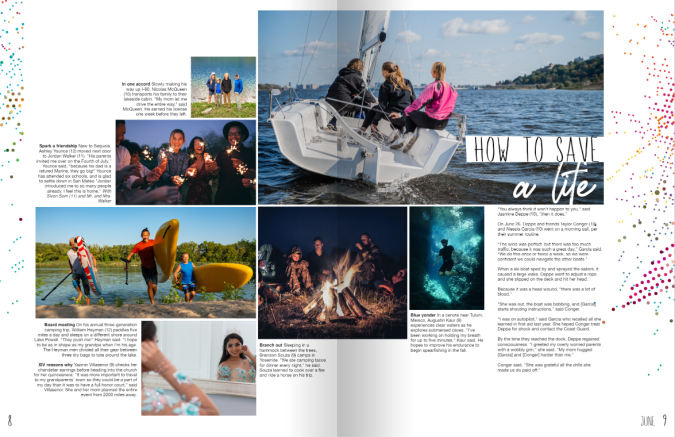
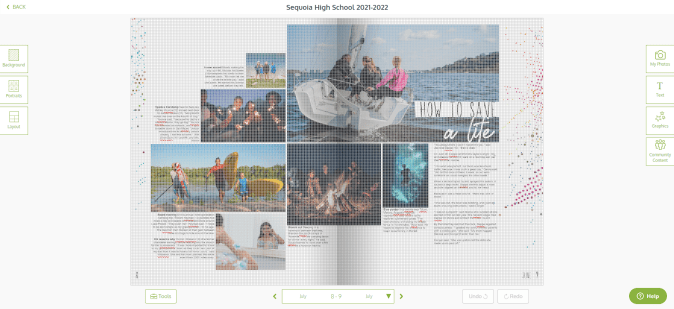
The Dominant Element: Hierarchy in Yearbook Design
Hierarchy tells our buyers what’s important, and for all you ELA teachers, it’s the outline of the spread. Spoiler alert: size matters.
The yearbook design lesson here is to immediately attract your reader’s attention with a dominant image or module. Use the golden spiral to build off your dominant. Use this ready-made yearbook design lesson to help launch your discussion with your students.
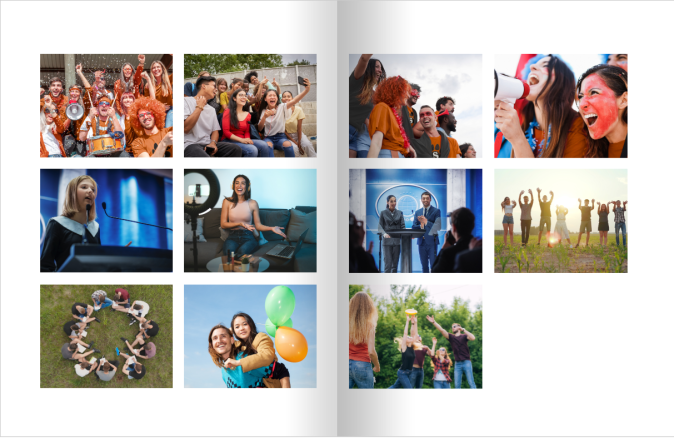

1. Photographs
The most interesting, story-telling, awe-inspiring photo should be dominant on your spread. Connect your headline to this image. You can build off your dominant photograph to fill your spread.
2. Headline
Advertising genius David Ogilvy said, “On the average, five times as many people read the headline as read the body copy. When you have written your headline, you have spent eighty cents out of your dollar.”
Since a headline is our entry point, it should connect yearbook buyers with the focus of the spread. Avoid “Football” when every photo pictures football–your buyers are smarter than that. If you must spell it out, use the folio. Appropriate puns, alliteration, and rhymes are literary techniques to use.
3. Body copy
My yearbook students once tried to 86 captions because “no one reads them.” Another Mr. Weightman yearbook lesson: “If they were worth reading, people would.” Ouch. (And true.)
Lessons centered around the art of open-ended questions made interviewing more of a conversation. Students would develop 10 questions and always end the interview with “Is there anything else I could have asked?”
Oh, and in case you’re wondering, people did read those captions.
If you’re just getting started, practice using anecdotal quotes to fill in captions and add detail. Captions should include facts and sensory details while identifying the subject of the photograph and their grade. More writing lessons abound in the Treering Yearbooks’ free curriculum.
The Fun Elements: the Acronym You and Your Students will Never Forget
Shout out to another design influencer: Robin Williams (not the genie). She’s a proponent of contrast, repetition, alignment, and proximity—master these four things, and everything you touch will be design gold. (I’ll give you one second more to figure out the acronym.) Teach these design elements individually, then combine them for the ultimate yearbook design lesson.
Contrast
Pair a bold font with a condensed one. Use opposite sides of the color wheel. Get crazy with font size (within reason). These design elements teach your reader where to look, and when used in concert with hierarchy, tell your students’ stories in an easy-to-follow manner.
Other ways to create contrast include shape (horizontal vs. vertical) and weight (thick vs. thin).
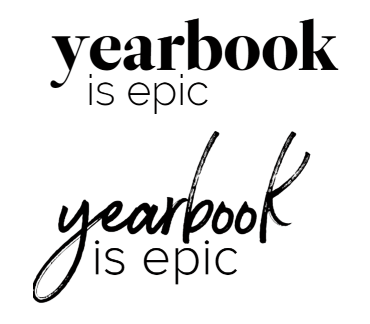
Repetition
From cover to cover, your book should look cohesive. Every layout will not be the same. I repeat, every layout does not have to be the same! Colors, fonts, sizes, and design elements should be consistent throughout your book. Remember, your theme is the brand, and your book is the platform by which you will develop it.
Alignment
Design is intentional. On your yearbook spreads, align
- Copy
- Photographs
- Quote packages
Proximity
Put the things that go together, together. This seems like a no-brainer, and yet, it’s a yearbook design lesson worth refreshing year after year.
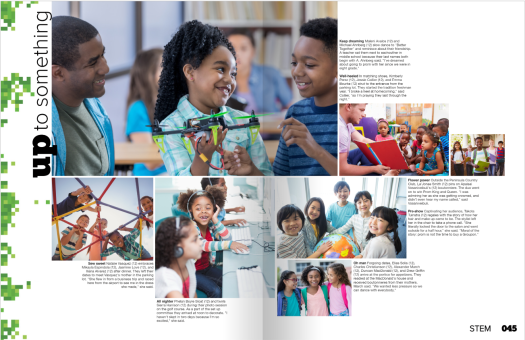
Yearbook design lessons are something you can teach throughout the year. Pin your favorite ideas (or steal some of ours).

2021-2022 yearbook theme trends
UPDATE: see 2023-2024 yearbook theme ideas. For more post-pandemic design trends, keep reading.
Using nostalgic designs, organic colors, and handmade elements, check out how you can harness the design and color trends for your 2021-2022 year(book) themes. The design world is unanimous: joy is back!
Treering has pre-released 15 new on-trend yearbook themes for 2021-2022! Log in to the app (for free) to see the full line of backgrounds, fonts, layouts, and artwork included in each theme to find some inspiration for your yearbook this year. Whether you're a Treering user or not, you can always look and use our ideas no matter who is your yearbook provider.
Trending Now: New Yearbook Theme Sneak Peek
Check back in late August for the full collection of new themes joining the Treering catalog. In the meantime, check out our top on-trend themes below.
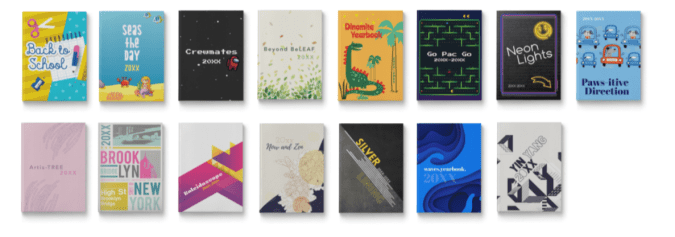
Our Top Five Yearbook Themes and Trends
2022 Yearbook Theme Design Trend: Nostalgia, Color
Nostalgic design is synonymous with retro and vintage with the caveat it evokes emotion. Research shows pieces from the past produce positivity in the present! Pair nostalgic elements such as colors, fonts, and images with old school photos from past yearbooks for a complete blast from the past.
Get the look with Treering:
The 90s are back and with it memories of Lisa Frank binders, Zack Morris phones, and NSYNC songs. As you rock your acid wash jeans and baby doll Ts, check out the vibrant colors and iconic graphics in the Back to School yearbook theme that have as much pop as your fav boy band. Outdoorsy colors—think sunshine, spring water, and wildflowers—brighten up this design with drag-and-drop school supply artwork and backgrounds.
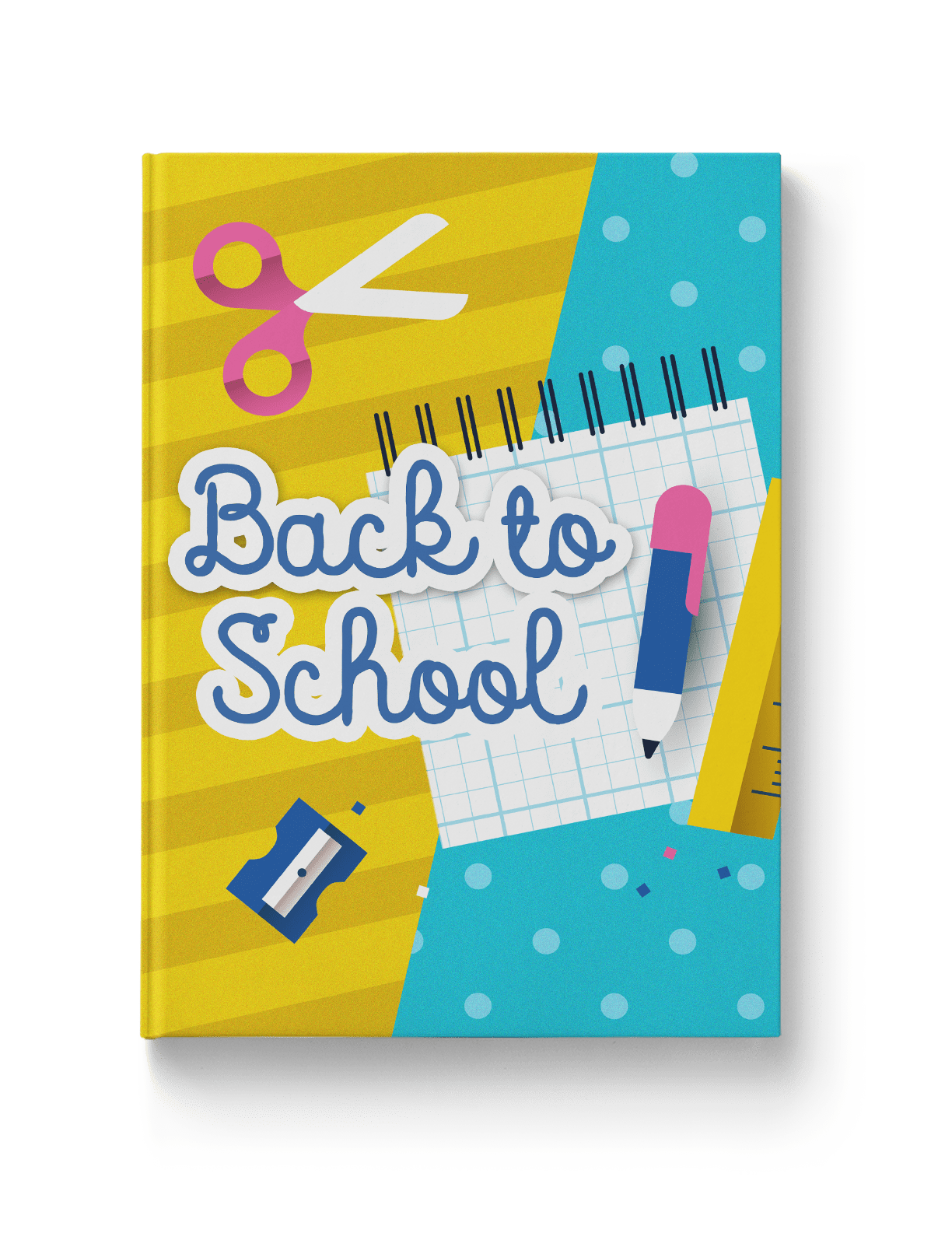
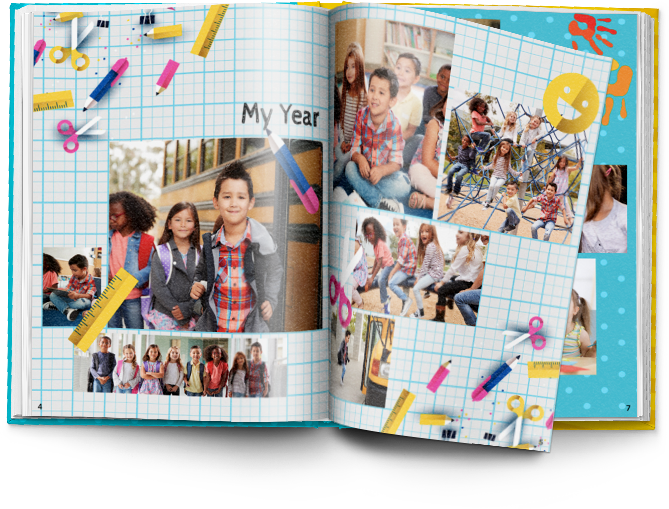
2022 Yearbook Theme Design Trend: Organic, Illustrative Design
In a year when we’re going back-to-basics in the classroom, you can bring them into the yearbook room. Celebrating living things is a tenet of organic design. Flora and fauna pop up in many of the new themes for 2021-2022 (hint, hint).
Hand-drawn images and line art continue to dominate the illustrative graphic design trends. Outlines, line art textures, and freeform shapes get their inspiration from the natural world.
Get the look with Treering:
Now and Zen is an airy collection of crisp lines, layers, geometric shapes set in this yearbook theme's neutral color palette. Like flannel, this design trend is meant to be layered.
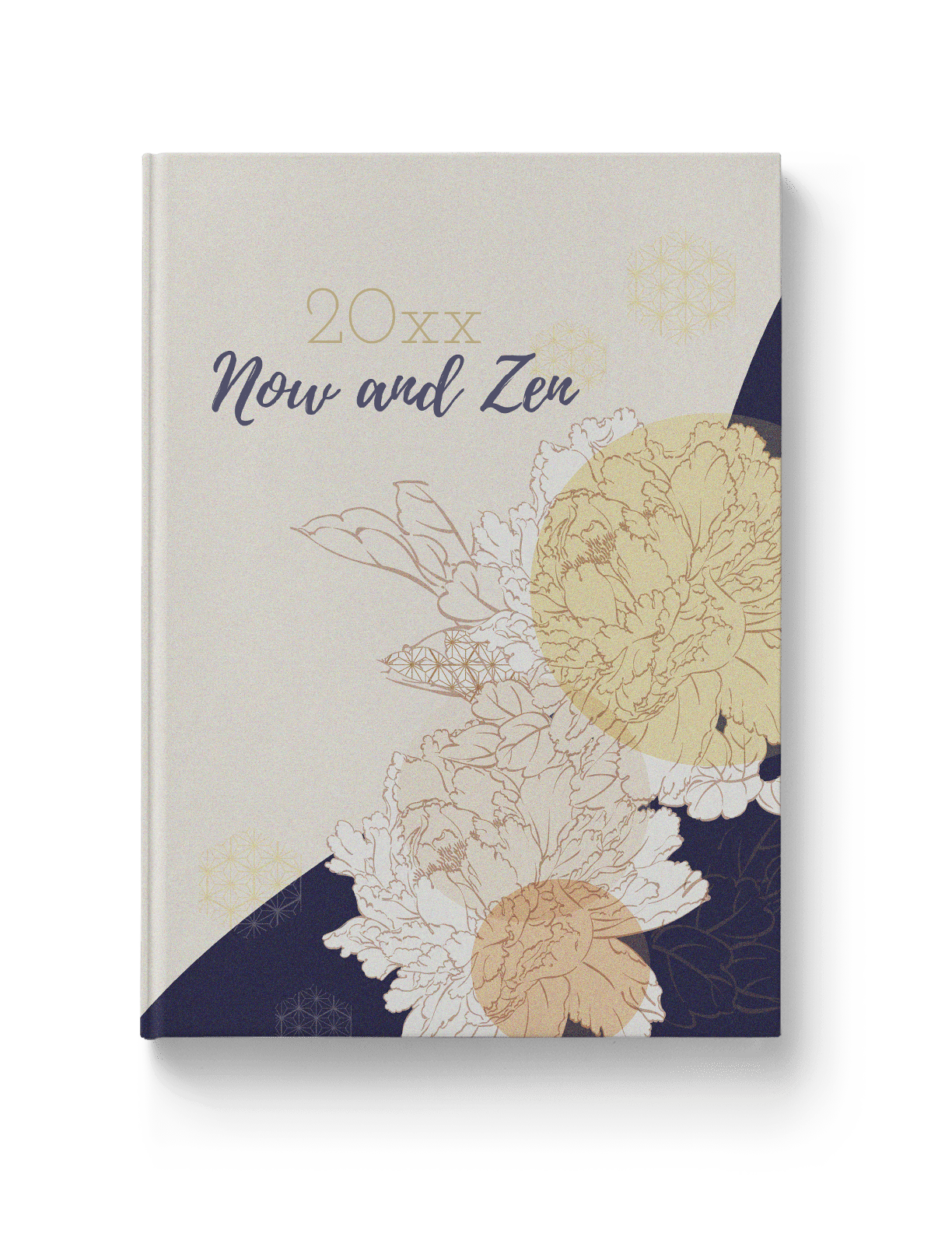

2022 Yearbook Theme Design Trend: Nostalgia, Symbols
We’ve established nostalgia gives us all the feels. Neon’s century-long presence in the US conjures memories from riding in classic cars and drinking malts with grandparents to wearing Electric Youth perfume and sweating through skate nights.
Symbols can do the same. A thumbs up or a heart means you’re getting noticed. A border means READ ME! Arrows tell you to keep going because exciting things are forthcoming! And we all have our go-to emoji for wearing our feelings on our screens.
Get the look with Treering
We modernized the look of neon by adding emojis and icons you can use to divide academics, extracurricular, and personality pages. Because of this, Neon Lights is a complete theme package that will lighten the load for your yearbook team.
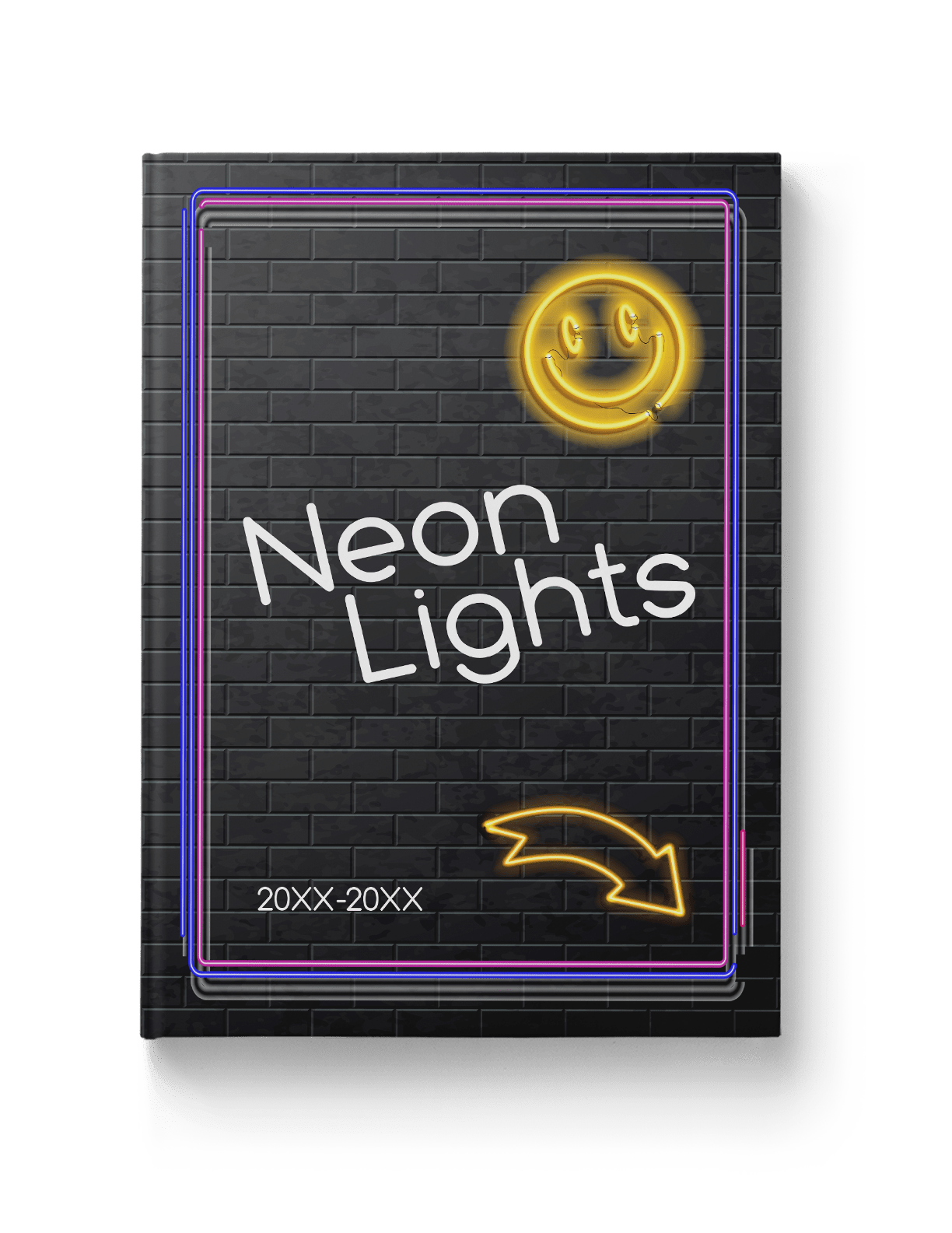
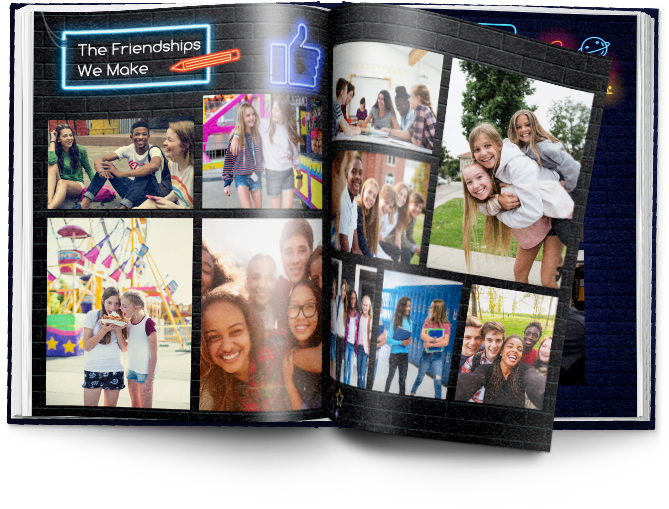
2022 Yearbook Theme Design Trend: Organic, Illustrative Design
After a year inside, the outdoors are calling! Natural textures, shapes, and colors are hot in the interior, industrial, and graphic design. They soothe. While it may not be as sappy as the nostalgic design trend—see what we did there—being in nature boosts creativity and reduces stress. And we need those two things for a budding yearbook program!
Get the look with Treering
The Beyond BeLEAF yearbook theme has illustrative, organic shapes and neutral colors that echo Treering’s commitment to sustainable business practices (shameless plug, I know...). Leafy borders, overlays, and frames hug your photos.

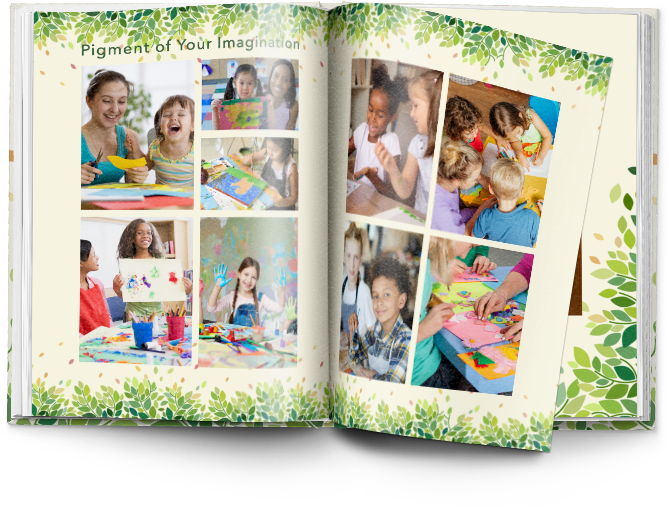
2022 Yearbook Theme Design Trend: Illustrative Design
The glory of illustrative design is its many manifestations: cartoon illustration picks up where the seriousness of the line art design trend leaves off. It’s whimsical and potentially nostalgic. It’s bold and bright. It’s fun and funky. If a playful yearbook theme aligns with your team’s vision, this is the trend to implement!
Get the look with Treering
By taking inspiration from popular games (that’s plural for a reason, people!), we created options for those who want their book to be timely, on-trend, and totally relatable to tweens. Start with the Crewmates theme, then Level Up.
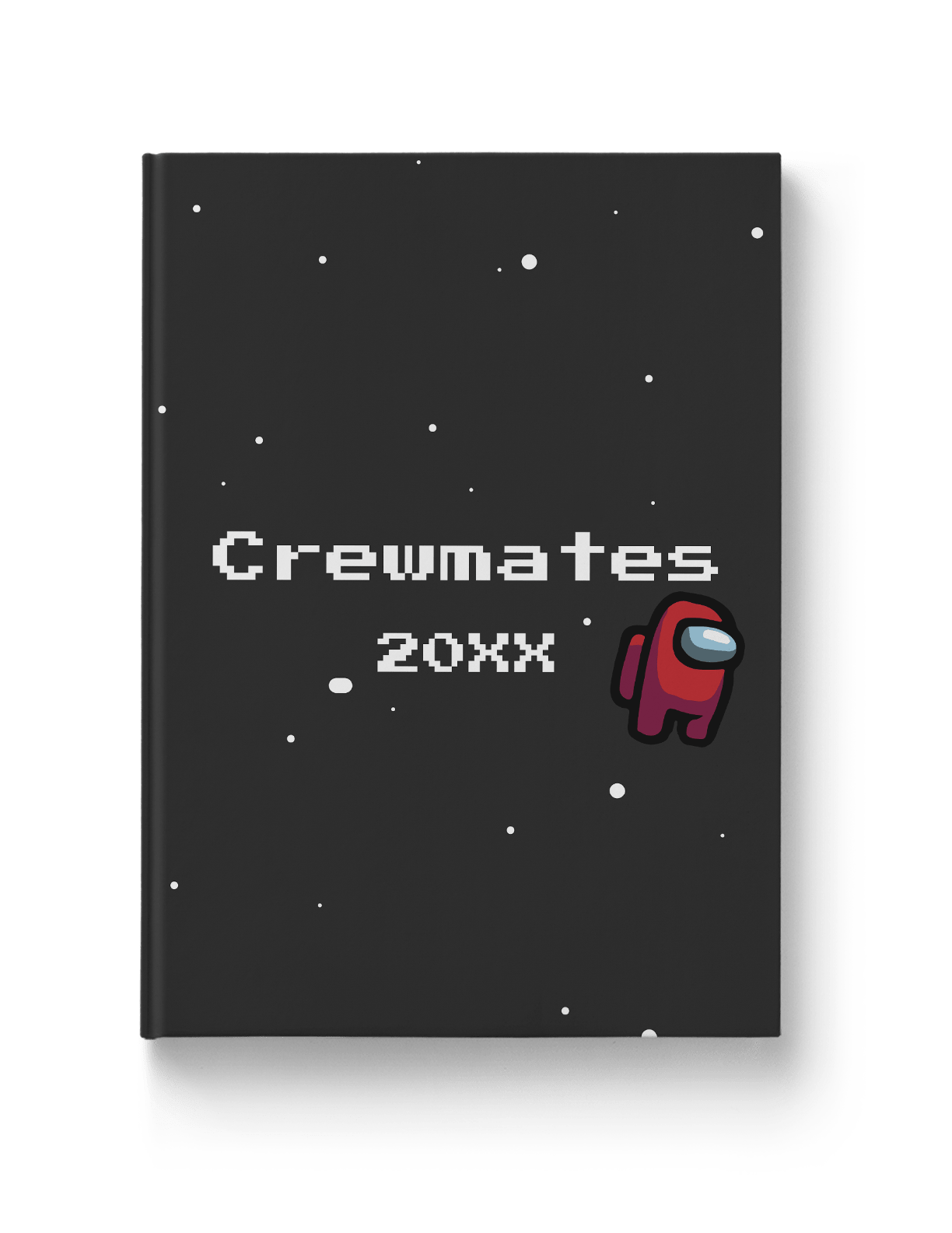
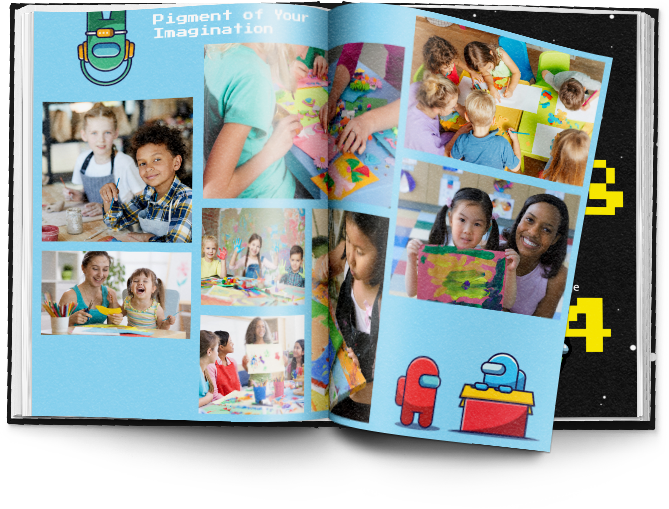
If you'd like more help selecting a yearbook theme and design trend for your community this year, check out these five questions to ask your yearbook team.

Your throwback yearbook theme needs this laser photo background
A Brief History on the Laser Photo Background
The laser photo background was all the rage in the 1980s, when many school portraits featured backdrops crisscrossed with bright, glowing lights. Back then it was totally stylish—and not at all ironic. The fad faded (or fizzled, if you will) and was banished to old yearbooks and family photo albums until 2007. That’s when a blogger posted this photo, titled “Me in ‘91”. It was, up to that point, the first laser photo background on the blog, which described itself as being dedicated to “the celebration of the perfect portrait.” (There is, in case you’re wondering, some sarcasm involved there.) Pretty much everybody sharing the image and basking in its cheesy glory essentially made that single portrait a meme before memes were even popular. The following year, a Tumblr blog called “We have Lasers!” debuted and—yup, you guessed it—it was dedicated entirely to school portraits with a laser photo background. As Lindsey Weber, the blog’s creator wrote in it’s “About” section: “You begged your mom to pay the extra $4. A tribute to the greatest school photo backdrop there ever was.” To say “We have Lasers!” took off would be an understatement: People submitted more than 500 portraits to be featured on the blog in less than two years, and the blog was featured on NPR, CNN, Time, and CBS News. Quickly, laser photo backgrounds went from meme to viral to mainstream. Popular sites, such as Awkward Family Photos and BuzzFeed, began featuring compilations of people posed in front of the iconic background. Even celebrities began recreating laser photo background images as spoofs (re: this picture of former 98 Degrees frontman, Nick Lachey). The Internet was, and in a lot of ways still is, in a laser-photo frenzy. So, how do you pull this trend into your throwback yearbook theme?Where to Find—And How To Use—Laser Photo Backgrounds in Your Throwback Yearbook Theme
There are two places to find laser photo backgrounds:- Buy an actual laser photo backdrop, in the form of a poster, online at Zazzle.com.
- Use this free laser photo background, created by Emily Coxe.
- Choose your image. A picture with a plain background is easiest to work with, so—if you have control over this—have your subject stand in front of a plain wall or against the side of a building to capture some natural light.
- Mask it. In Photoshop, use the pen tool to mask the person in the image. (Learn more about masking here.) You can also use more sophisticated Photoshop techniques, depending on how precise you want the image to appear. If you’re new to Photoshop, however, we recommend sticking to the basics.
- Insert the background. Drag and drop, or copy and paste, the laser background of your choice. Size and position, save your image, and you’re good to go.
- Add your image to a PowerPoint slide. Again, a picture with a plain background is easiest to work with.
- Use the “Remove Background” feature. When you upload a photo in PowerPoint, your toolbar should automatically reset to display the “Format Picture” options that are available. You’ll want to be on that section of the toolbar, so make sure you’re there. Then, under the “Adjust” settings, choose “Remove Background.” PowerPoint guides you through the process from there, and it’s super simple.
- Insert the background. Once you upload the background, you’ll want to size it appropriately and position it, like you did in Photoshop. Make sure you adjust your layers, so that the background is in the back. You can do that by finding the “Arrange” section in the “Format Picture” toolbar, and using the “Reorder” feature.
- Save your image, but be sure to save your image as a .png, .jpg, or .gif file, and not a PowerPoint file.